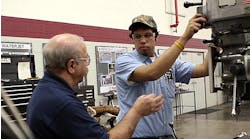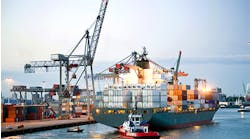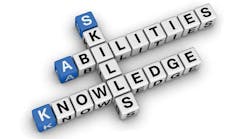Nearly five years have passed since the financial crisis of 2008 and the recession that followed, and one lasting result has been a change in the way businesses are staffed: most companies now operate with fewer workers, relying more on automation and technology. The workers who have remained find themselves assuming more duties, and accumulating more skills. As the economy improves and more jobs become available, it’s logical that employees will seek new positions to take advantage of their circumstances -- seeking better benefits, wages and above all, job satisfaction.
The next wave of economic growth will come from those remaining workers. In the 21st Century smart companies are leveraging the inventiveness, ingenuity, creativity, and “tricks of the trade” to be found in their remaining workforce, drawing on these resources to launch new products and services. This is your final warning: In order to ride the next wave of economic growth, to shorten the sales learning curve and expand market share, you need to access the assets available to you. Many of the skills, knowledge and abilities — SKAs — you need now are already available in your remaining workforce.
It’s understood that the value of a company is reflected in its stock price, but not always: Microsoft trades at a market value far in excess of its book value. Chairman Bill Gates is one of the world’s richest people, but he didn’t start out that way. He doesn’t own mines, refineries, or factories, and yet he’s worth tens of billions of dollars. How did he get so rich?
The answer is that in the Information Age, great wealth no longer depends on controlling physical assets. Intellectual capital, those same SKAs, has superseded the value of agricultural and industrial assets.
To succeed in the Information Age, you must maximize the value of intellectual capital. Henry Ford exploited his own insights to build an industrial empire, but we have passed the time when any company can own all the resources on which to build new wealth. The best opportunity is to harness the value of your organization’s SKAs by documenting and sharing that information with all employees.
Managing resources is another element of successful businesses, those that find ways to maximize the value of their financial assets, facilities, and equipment. In the Information Age, the challenge is managing intellectual capital — the SKAs of the remaining workforce; the intangibles, like solving complex problems; and the decision-making knack that grows from education and experience.
In my experience as a business consultant, I have encountered many examples of managers who have purchased new equipment to replace workers, overlooking the SKAs, that mix of experience, education, values, information, expertise, and initiation that sustains organizations. SKAs are the explicit knowledge of your workers, including expertise that in some cases means only one person can do a particular job. Often SKAs are not stored in company documents, but reside in the minds of remaining workers. Recent reporting about “the skills gap” make it clear that a tremendous amount of knowledge has been lost to manufacturing businesses, leaving organizations to face the challenge of growth without the SKAs necessary to thrive in the Information Age.
Accessing SKAs, Identifying SMEs
Look, for example, at the public utility industry. An exodus of retirees has hampered the ability of utilities to provide power and effective customer service, without even aiming for higher goals like “operational excellence.” Until now, large organizations like public utilities have depended on a large and loyal staff to preserve the skills, knowledge and abilities. This is no longer a good strategy in an age of smaller and more mobile workforces. Utilities, manufacturers, and other industries must find ways to access the SKAs of their remaining workers.
A knowledge management system will collect, document, and leverage their experience, education, values, information, expertise and initiation. For example, a Florida utility company implemented a knowledge-management database to capture in electronic format the documents that are filed throughout the organization, even documents that are not centrally available (e.g., in file cabinets) and in the minds of the remaining workforce. Knowledge management is critical to the long-term business plan for any company in any industry.
Part of implementing a knowledge management system is identifying the Subject Matter Experts (SMEs) in your remaining workforce, so that other employees and new hires have access to the best practices represented by their SKAs.
In my search for the latest and greatest tablet computer, I met an enthusiastic sales associate, eager to sell me a Microsoft Surface Pro. He told me a lot about how the tablet operates, and bought the Surface Pro because of his enthusiasm. But, I left the store confused about how the tablet would benefit my work. He was a SME, but his SKAs remained unavailable to me.
The sales associate is an example of an SME with a great deal of knowledge and expertise, but unfamiliar with how to train or transfer that to others. To address the skills gap, manufacturers and other companies will need SMEs to deliver more effective training.
Recruit your SMEs to deliver classroom training, create knowledge management databases, videotape top performers, and write standard operating procedures. You also can create apprenticeships, mentor younger workers, and cross-train others. As more companies streamline their budgets, they will need their SMEs to deliver training.
Your SMEs possess the highest level of SKAs for specialized jobs in your company. Invest in your SMEs by providing them a Train the Trainer System, with a detailed lesson plan, defined training objectives and methods. Write training materials, prepare trainees to learn, present the training information, and evaluate the learned skills, knowledge and abilities.
Your SMEs may know a lot about their own SKAs, but not a lot about instruction. They need to know how to be learner-centric and action-oriented, to communicate their SKAs and fill your organization’s skills gap.
Managing your organization’s resources in the Information Age is a matter of accessing the workers’ SKAs by documenting and organizing their knowledge and experience, documenting the information, and then sharing it with others across the company. Their skills, knowledge and abilities are your company’s competitive advantage now, and many of the skills and insights you need to grow exist in your organization already.
Other sources of competitive advantage have been eroded away, and most of what represents value is intellectual capital. Heed the final warning by accessing that information while it is available, and let your remaining workforce drive your company’s future growth.










